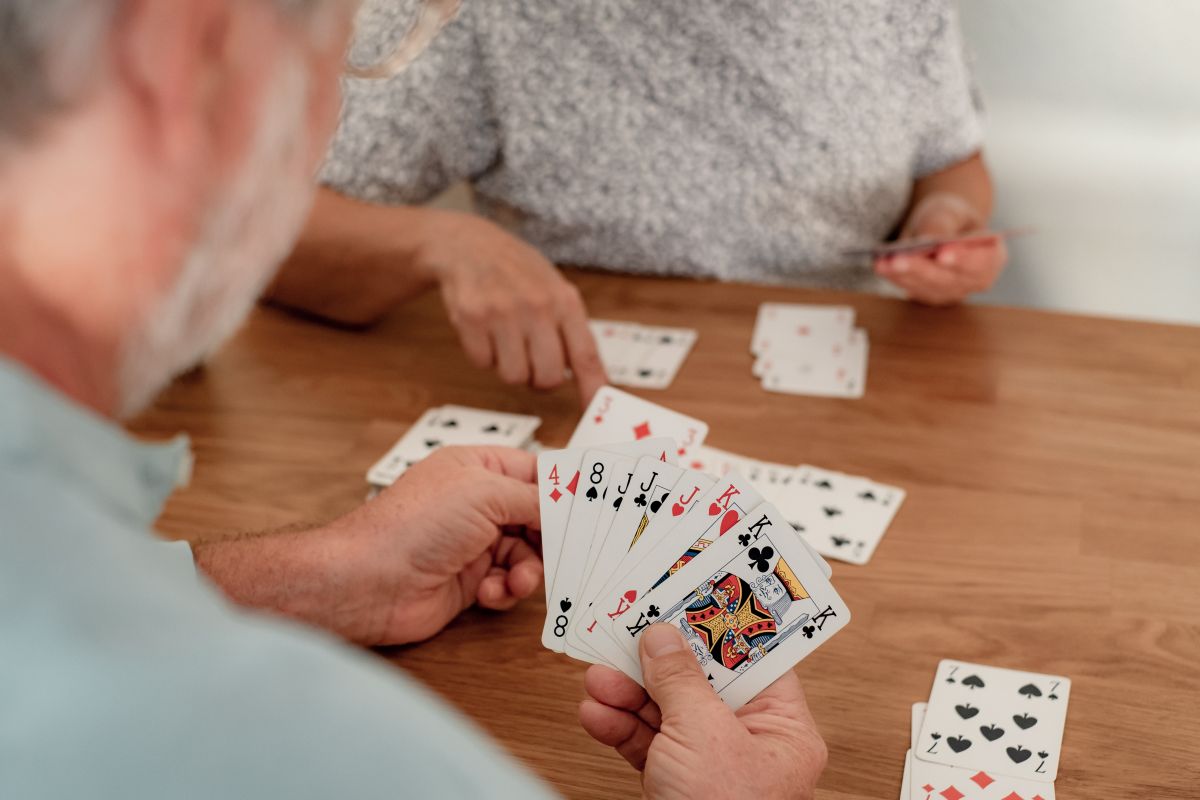🧠 Master Rummy: Advanced Strategies & Expert Tips

Becoming a successful Rummy player requires more than just understanding the rules. It demands strategic thinking, psychological insight, and mathematical understanding. This comprehensive guide will transform you from a casual player into a formidable Rummy strategist.
🎯 Foundation Strategies for Success

1. Pure Sequence Priority
The most critical strategy in Indian Rummy is forming your pure sequence as quickly as possible. This should be your primary focus from the very first turn.
- Early Formation: Identify potential pure sequences in your opening hand immediately
- Multiple Options: Work on 2-3 potential pure sequences simultaneously
- Card Retention: Hold onto cards that can form consecutive sequences
- Safe Declaration: Only consider other combinations after securing your pure sequence
2. Smart Card Observation
Pay close attention to every card your opponents pick and discard. This information is crucial for making informed decisions.
- Discard Patterns: Track what suits and ranks opponents are discarding
- Pick Patterns: Notice if opponents pick from the open pile frequently
- Danger Cards: Avoid discarding cards that opponents have shown interest in
- Safe Discards: Discard cards that have already been discarded by opponents
🃏 Advanced Card Management Techniques

Joker Optimization Strategy
Jokers are powerful tools that can make or break your game. Use them wisely to maximize their potential.
When to Use Jokers:
- High-Value Completion: Use jokers to complete sets with face cards (J, Q, K, A)
- Sequence Bridging: Fill gaps in sequences that are difficult to complete naturally
- Emergency Completion: When opponents are close to declaring
- Impure Sequence Formation: Create your second sequence requirement
When NOT to Use Jokers:
- Never waste jokers in pure sequences (they can't be used anyway)
- Avoid using jokers for low-value cards (2, 3, 4, 5, 6)
- Don't use jokers if you can complete combinations naturally
- Save jokers for last-minute adjustments
High-Value Card Strategy
Managing high-value cards (10, J, Q, K, A) is crucial for minimizing penalty points.
- Early Disposal: Discard unconnected high-value cards early in the game
- Strategic Retention: Keep high-value cards only if they fit into potential combinations
- Joker Replacement: Use jokers to complete high-value combinations
- Risk Assessment: Balance the risk of holding high-value cards vs. combination potential
🎲 Psychological Warfare and Mind Games

Reading Opponent Behavior
Online Rummy may not show facial expressions, but player behavior patterns reveal valuable information.
Timing Patterns:
- Quick Decisions: May indicate obvious moves or pre-planned strategy
- Long Delays: Usually means difficult decisions or strong hand consideration
- Consistent Timing: Suggests experienced players with systematic approaches
- Erratic Timing: May indicate nervousness or uncertainty
Discard Analysis:
- Early High Cards: Suggests focus on pure sequences
- Middle Cards: Indicates potential sequence building
- Repeated Suits: Shows lack of sequences in that suit
- Random Discards: May indicate a strong hand or confusion
Deception Tactics
While maintaining ethical gameplay, you can use strategic deception to your advantage.
- False Patterns: Occasionally discard cards from suits you're actually collecting
- Timing Variation: Vary your decision-making time to avoid predictable patterns
- Bait Discards: Discard cards that might tempt opponents into wrong decisions
- Confident Play: Make decisive moves even with average hands to project strength
📊 Mathematical Approach to Rummy
Probability Calculations
Understanding basic probability helps make better decisions about card retention and discarding.
Key Probability Factors:
- Card Availability: Calculate how many cards can complete your sequences
- Opponent Holdings: Estimate probability based on observed discards
- Deck Penetration: Consider how many cards have been revealed
- Multiple Outs: Prioritize combinations with more completion possibilities
Risk-Reward Analysis
Every decision in Rummy involves weighing potential gains against possible losses.
- Drop Decision: Calculate penalty vs. probability of improvement
- Declaration Timing: Balance certainty vs. potential for better hand
- Card Exchange: Weigh improvement chances vs. information given to opponents
- Joker Usage: Consider immediate benefit vs. future flexibility
🏆 Tournament-Specific Strategies

Pool Rummy Strategy
Pool games require different approaches due to the elimination format.
Early Stage Strategy:
- Play conservatively to avoid early elimination
- Focus on consistent, low-penalty finishes
- Avoid high-risk, high-reward plays
- Build your skill confidence for later stages
Middle Stage Strategy:
- Identify struggling opponents and avoid helping them
- Take calculated risks when behind
- Maintain awareness of elimination thresholds
- Balance aggression with safety
Final Stage Strategy:
- Play more aggressively if elimination threatens
- Focus on winning individual hands
- Take risks to avoid accumulating penalty points
- Consider dropping early if hand is very poor
Points Rummy Strategy
Fast-paced points games require quick decision-making and efficient play.
- Speed Priority: Make decisions quickly to avoid time penalties
- High Aggression: Take more risks for quicker wins
- Quick Drops: Don't hesitate to drop with poor hands
- Pattern Recognition: Quickly identify strong starting hands
🎯 Situational Strategies
Opening Hand Analysis
Your approach should vary dramatically based on your starting hand strength.
Strong Opening Hands:
- Already have a pure sequence or close to one
- Multiple jokers with good connecting cards
- Several potential sequence formations
- Strategy: Play aggressively, aim for quick declaration
Average Opening Hands:
- Some connecting cards but no clear sequences
- Mixed high and low value cards
- One or two jokers with moderate potential
- Strategy: Play steadily, focus on pure sequence first
Poor Opening Hands:
- Mostly disconnected high-value cards
- No jokers and poor sequence potential
- Multiple suits with gaps
- Strategy: Consider early drop or play very defensively
Mid-Game Adjustments
Adapt your strategy based on game progression and opponent behavior.
- Leading Position: Play more conservatively to maintain advantage
- Trailing Position: Take calculated risks to catch up
- Close Competition: Focus on error-free play
- Multiple Opponents Close: Play more defensively
⚡ Common Mistakes to Avoid

Strategic Errors
- Joker Wastage: Using jokers for low-value or easily completable combinations
- Information Leakage: Picking cards from discard pile too frequently
- Tunnel Vision: Focusing on one combination while ignoring better alternatives
- Premature Declaration: Declaring without double-checking validity
Psychological Errors
- Tilt Playing: Making emotional decisions after losses
- Overconfidence: Taking unnecessary risks with strong hands
- Analysis Paralysis: Taking too long to make obvious decisions
- Pattern Rigidity: Sticking to one strategy regardless of situation
🎮 Practice Recommendations
Skill Development Routine
- Daily Practice: Play at least 3-5 practice games daily
- Hand Analysis: Review completed games to identify improvement areas
- Strategy Testing: Experiment with different approaches in low-stakes games
- Observation Skills: Focus on improving opponent reading abilities
Advanced Training Techniques
- Hand Simulation: Practice with different starting hand scenarios
- Speed Training: Focus on making quick, accurate decisions
- Pressure Practice: Play in tournament-style environments
- Video Analysis: Study games of expert players
⚠️ Responsible Gaming Notice
This platform is for entertainment purposes only and is intended for users aged 18 and above. While strategies can improve your gameplay, remember that gambling involves risk and no strategy guarantees wins. Please play responsibly and within your means. Set time and money limits for your gaming sessions. If you feel you have a gambling problem, please seek help from professional organizations.